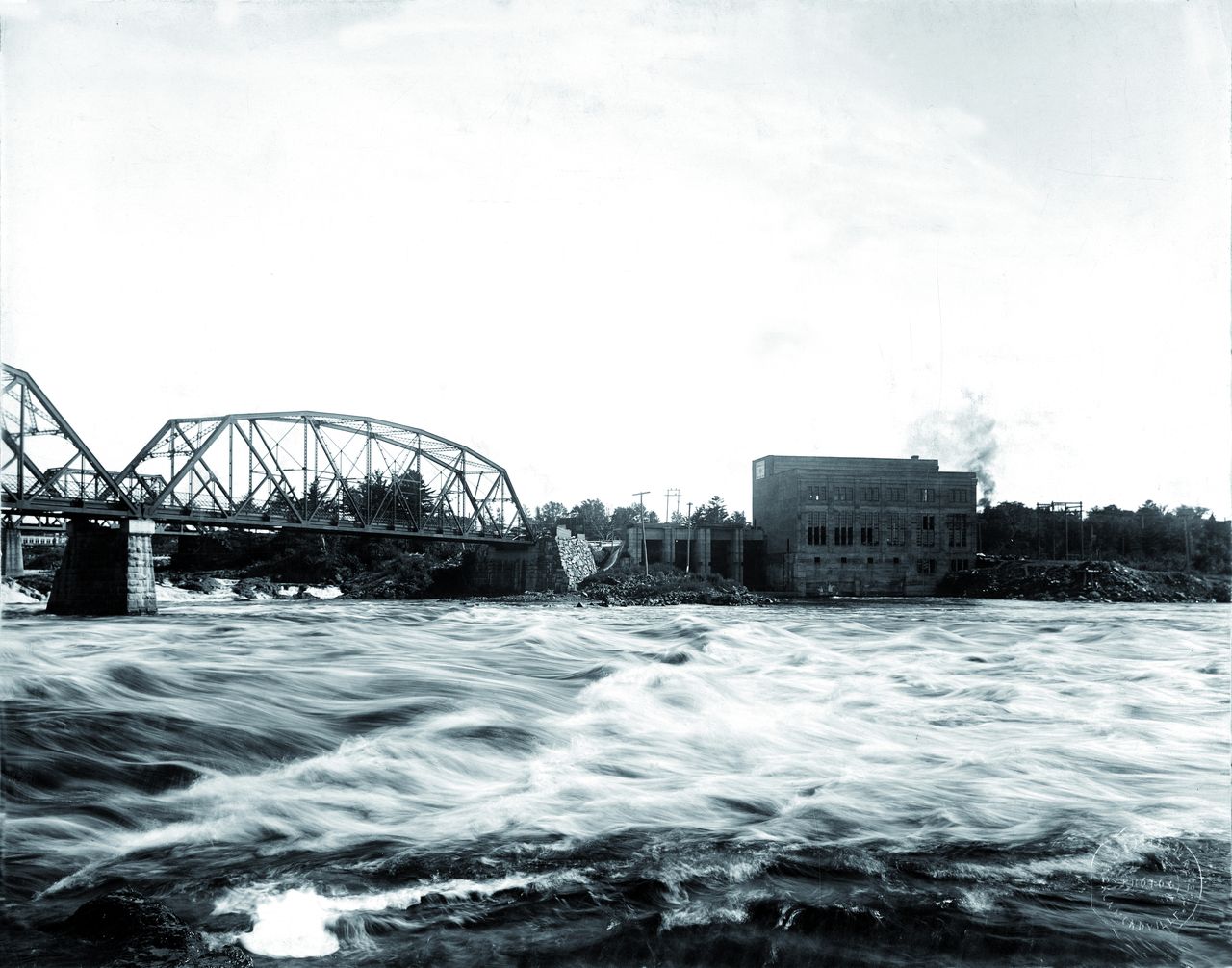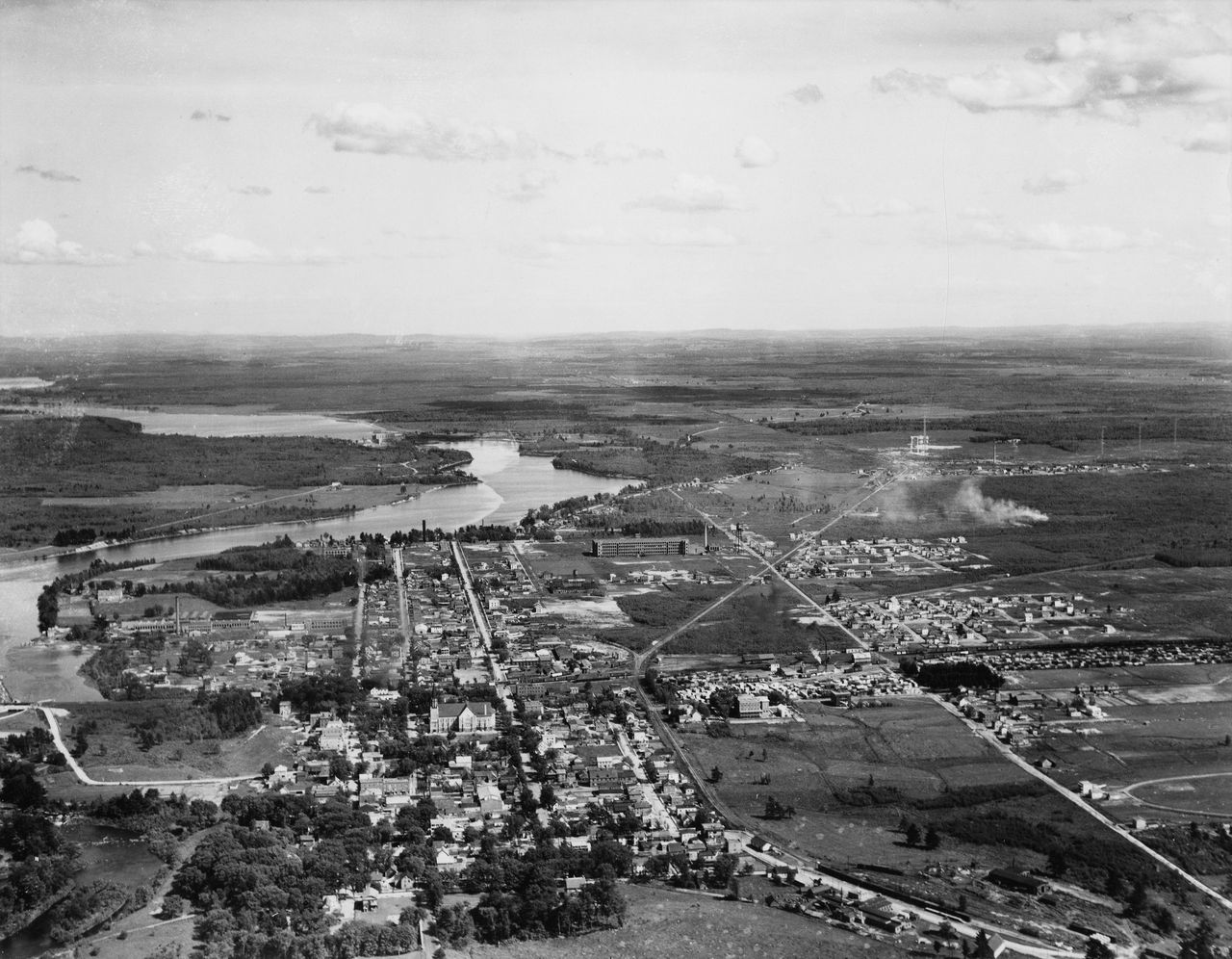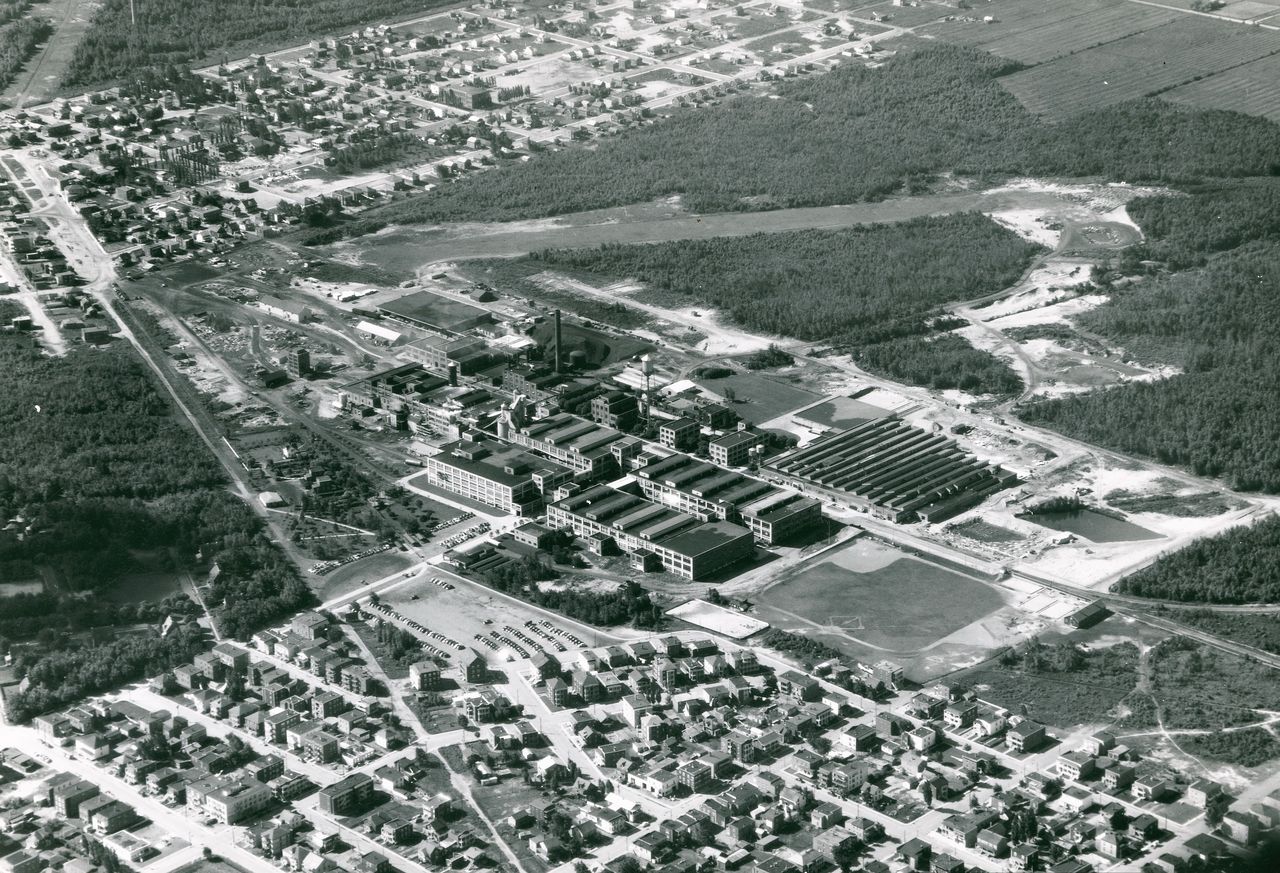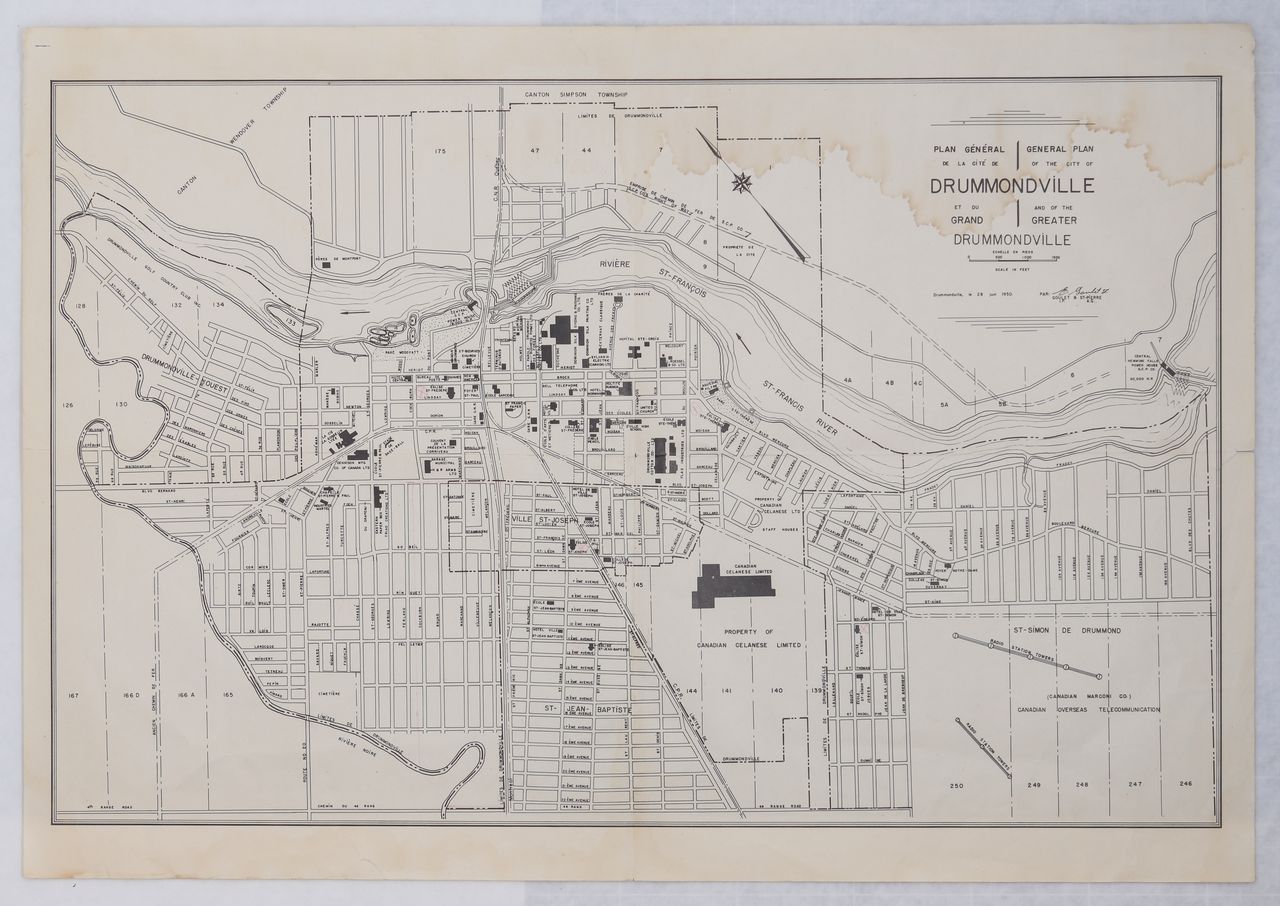An Important Period of Industrial Expansion for Drummondville
The decline of businesses based on raw materials, along with the closing of the John McDougall & Company ironworks in 1911, took a hard toll on the town of Drummondville at the turn of the 20th century. People were moving away to find work elsewhere. However, the arrival of the Southern Canada Power (SCP) company in 1914 represented a major shift for the tiny municipality, opening up new possibilities for industrial development. The company was founded in 1913. Only a year later SCP acquired the rights to harness the power of six waterfalls along the St. Francis River, buying the town’s hydroelectric power station at the end of Des Forges Street, which had been built in 1896. Although SCP already produced enough electricity to supply the town’s small factories, it completed the construction of a new hydroelectric complex by 1919 to furnish even more power.
With the outbreak of World War I in 1914, factories were cropping up around the world to support the war. Ætna Explosives chose Drummondville as the site of its Canadian subsidiary, enticed by the town’s location, its proximity to two of the most important railway lines, and its potential for a considerable power supply from SCP. Their new factory was set to open in 1916 under the name Ætna Chemical. An initial order for three million kilograms of smokeless gunpowder from the Russian government led to 2,500 workers being hired, although the town only had a population of 3,000 people at the time. The end of the war in November 1918 forced the closure of the factory a few months later in January 1919, leaving the remaining 700 employees without work.
The town of Drummondville did not go downhill, far from it. It took advantage of its significant labour pool and of the brand-new SCP hydroelectric complex to attract businesses by offering them generous tax exemptions. In November 1919, Mayor Joseph-Ovila Montplaisir announced the opening of two new textile factories: Butterfly Hosiery (which produced high-end silk stockings) and Canadian H. W. Gossard (women’s undergarments). Soon, there were more and more businesses opening factories, namely Jenckes Canadian Tire Fabrics (fabrics, nets, and rope) in 1920; Dominion Silk Dyeing & Finishing (fabric dyeing) in 1923; Louis Roessel (natural silk fabrics) in 1924; and Canadian Celanese (artificial silk fabrics) in 1926. The arrival of these businesses heralded a golden age for Drummondville.
In 1939, the municipality was ranked fourth across the province in terms of its annual production value. This economic vitality led to a number of positive ripple effects: The population tripled from 4,422 inhabitants in 1921 to 12,023 in 1931, new theatres began to appear in the 1930s, and there were new sports facilities to cater to local athletes of all sorts. Furthermore, the hospital, Hôpital Sainte-Croix, expanded and relocated several times to adapt to the massive population growth. However, starting in the 1950s, the removal of tariffs protecting the Canadian textile industry led to a slowdown in production, and the town of Drummondville began to experience the effects of this shift…






